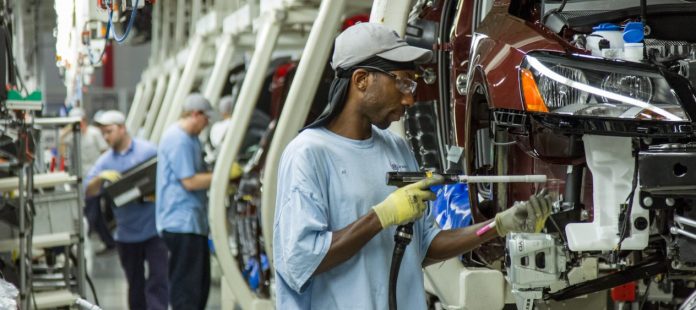Stocks are soaring again this morning as investors digest a shocking economic report.
ADP and Moody’s Analytics revealed today that U.S. private payrolls fell by only 2.76 million in May, far below the 8.75 million consensus estimate. The numbers reflect a massive disparity between what economists expected and the true number of job losses.
Both firms maintain that the information is accurate. Ahu Yildirmaz, co-head of the ADP Research Institute, sees it as a signal that the economy bottomed in April, not May, as many analysts believed.
“The impact of the COVID-19 crisis continues to weigh on businesses of all sizes,” Yildirmaz said.
“While the labor market is still reeling from the effects of the pandemic, job loss likely peaked in April, as many states have begun a phased reopening of businesses.”
Mark Zandi, chief economist at Moody’s, remarked that May’s payroll decline is “obviously an awful number, but not as catastrophic as expected.”
The data is supported by a drop in continuing jobless claims, which represents Americans who have been receiving unemployment benefits for a minimum of two weeks. The current continuing jobless claims total sits at 21.052 million, down 3.86 million over the last week.
The all-time high for those types of claims occurred back in the week of May 9th when it peaked at 24.9 million.
Many analysts are viewing the private payrolls report as a “green light” for the rally to continue.
“Equities are off to a very good start in June,” Gregory Faranello, head of U.S. rates trading at AmeriVet Securities, said.
“Looking past some clear roadblocks, risk assets continue to move forward off the back of brighter days, reopening the economy and trillions in liquidity.”
Jim Paulsen, chief investment strategist at the Leuthold Group, commented that this morning’s report is great news for bulls in an interview with CNBC.
“Despite several issues of importance — national riots, Chinese relations, an ongoing pandemic — the stock market is primarily focused on a single thing: the restart of U.S. and global economic activities,” Paulsen said.
“The broader stock market – small-cap stocks, cyclical sectors, international stock markets, and emerging stock markets – is increasingly participating more pronouncedly in this rally suggesting the recession is ending.”
On Tuesday afternoon, Wharton professor Jeremy Siegel told investors that they have the Fed to thank for a rally continuation.
“I think this rally has further to go. It has all those doubters there but it’s the liquidity that the Fed provided that I think is the prime determinant,” Siegel explained.
And with the major indexes rising still, it’s hard to argue with the optimists who believe the recession is already over. Positive headlines are flooding in left and right.
The reopening, it seems, is working.
But sadly, that doesn’t mean stocks are deserving of their current valuation. Just yesterday, the Atlanta Fed released a report predicting a 53% drop in second-quarter GDP.
The S&P 500, by comparison, is down only 7% from its all-time high.
The disparity was enough to cause noted economist Ed Yardeni, head of Yardeni Research, to revise his expectations of a “V-shaped” recovery to a “U-shaped” one that would occur much slower.
Yardeni says it won’t be until “late 2022” that U.S. GDP growth gets back up to pre-coronavirus levels.
So, while rosy sentiment, Fed liquidity, and better-than-expected data could support a move even higher, it doesn’t change the fact that the market is overbought.
Investors – bulls in particular – need to stay nimble, now more than ever.
Because once the selling starts, the “house of cards” that is the current rally could fall in an instant, prompting another crash just a few months after the already disastrous COVID-19 collapse.








